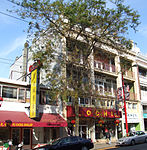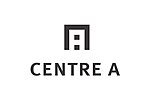Chinese Canadian Military Museum Society
1998 establishments in British ColumbiaCanadian military stubsCanadian museum stubsChinese-Canadian culture in VancouverChinese Canadian organizations ... and 6 more
Ethnography stubsMilitary and war museums in CanadaMuseums established in 1998Museums in VancouverMuseums of Chinese culture abroadVancouver stubs

The Chinese Canadian Military Museum Society (CCMMS) is located in Vancouver, on the second floor of the Chinese Cultural Centre. It was created in 1998 and maintains a museum in that city.The museum has given temporary displays to the Canadian War Museum in Ottawa.
Excerpt from the Wikipedia article Chinese Canadian Military Museum Society (License: CC BY-SA 3.0, Authors, Images).Chinese Canadian Military Museum Society
Columbia Street, Vancouver
Geographical coordinates (GPS) Address Nearby Places Show on map
Geographical coordinates (GPS)
| Latitude | Longitude |
|---|---|
| N 49.279762 ° | E -123.102534 ° |
Address
Columbia Street
Columbia Street
V6A Vancouver
British Columbia, Canada
Open on Google Maps






